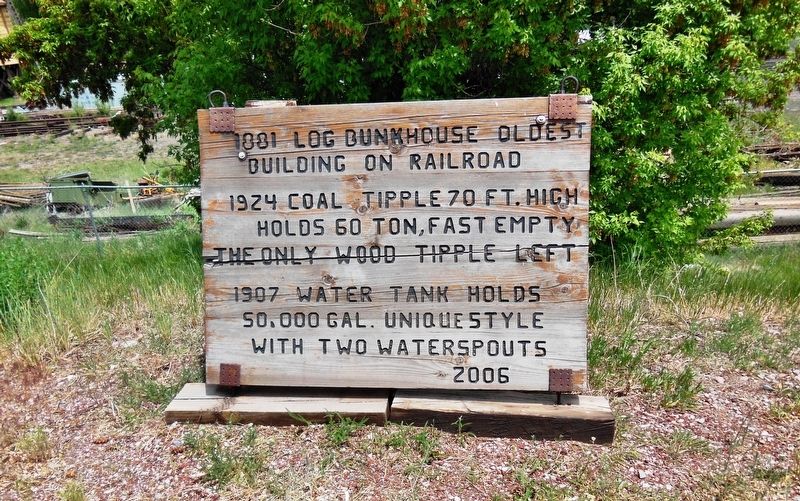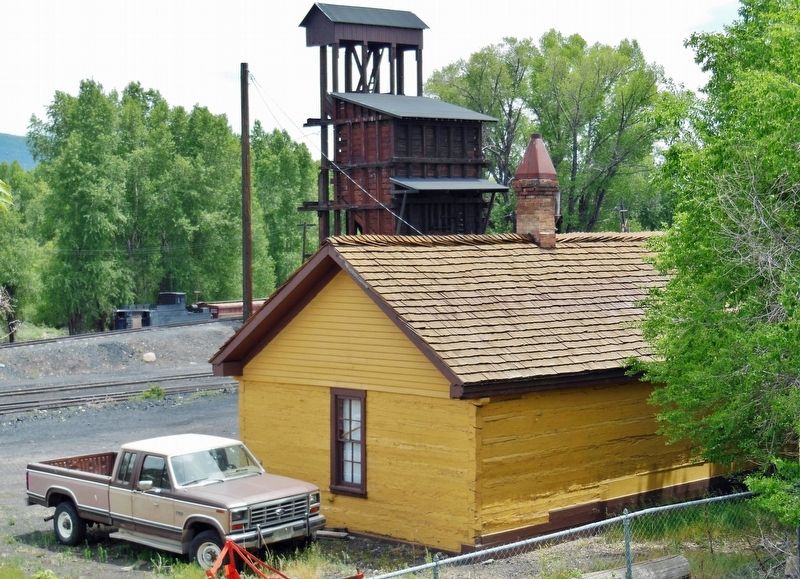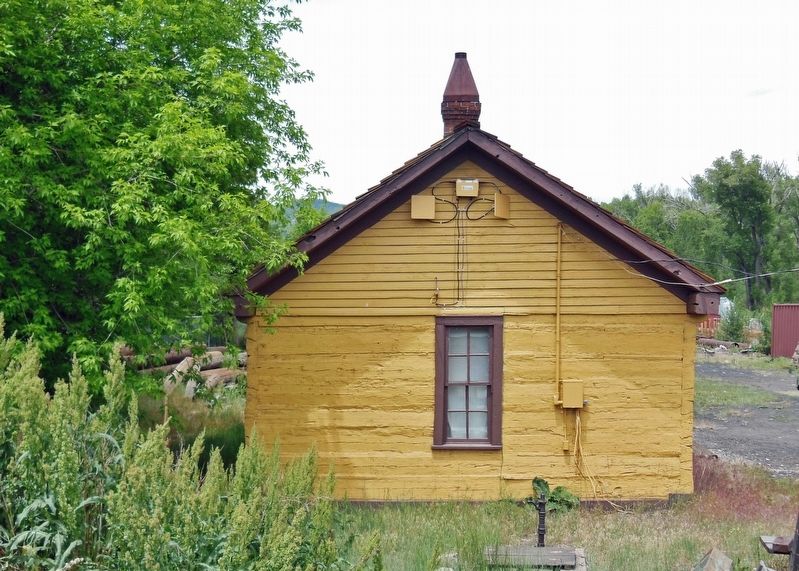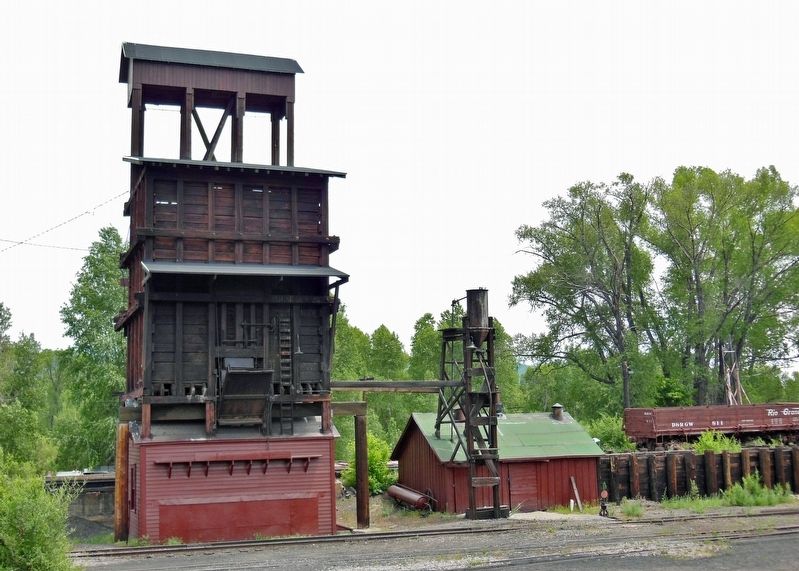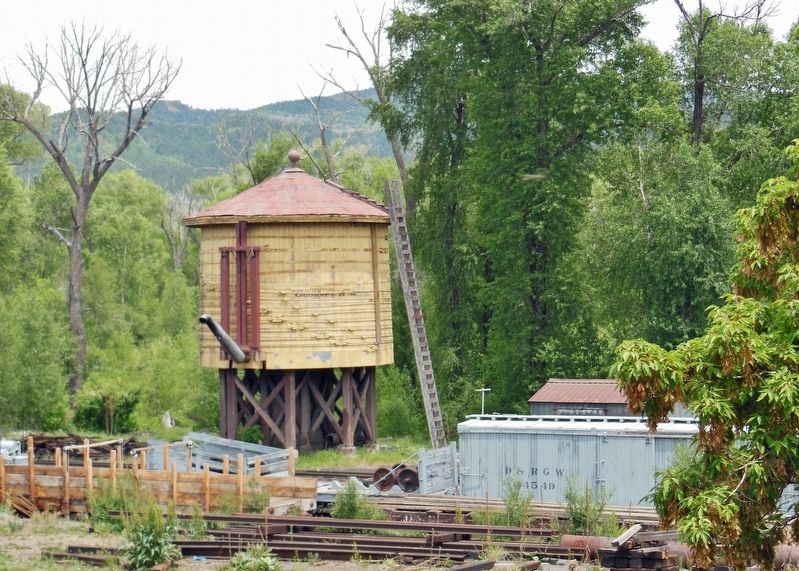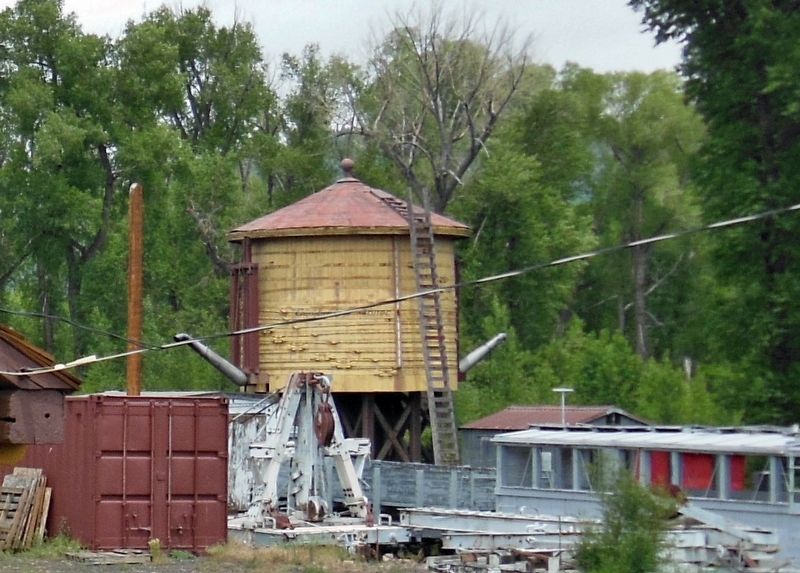Chama in Rio Arriba County, New Mexico — The American Mountains (Southwest)
1881 Log Bunkhouse
building on railroad
1924 Coal Tipple • 70 ft. high
holds 60 ton, fast empty
the only wood tipple left
1907 Water Tank • holds
50,000 gal. • unique style
with two waterspouts
Erected 2006.
Topics. This historical marker is listed in these topic lists: Architecture • Railroads & Streetcars. A significant historical year for this entry is 1881.
Location. 36° 54.289′ N, 106° 34.691′ W. Marker is in Chama, New Mexico, in Rio Arriba County. Marker is at the intersection of Terrace Avenue (New Mexico Route 17) and 3rd Street, on the right when traveling north on Terrace Avenue. Touch for map. Marker is in this post office area: Chama NM 87520, United States of America. Touch for directions.
Other nearby markers. At least 8 other markers are within 14 miles of this marker, measured as the crow flies. Chama (about 800 feet away, measured in a direct line); Old Spanish Trail (approx. 1˝ miles away); a different marker also named Chama (approx. 3.2 miles away); Cumbres Pass (approx. 7.6 miles away); Continental Divide (approx. 8.7 miles away); a different marker also named Cumbres Pass (approx. 10.7 miles away in Colorado); Fort Lowell (approx. 12.8 miles away); Tierra Amarilla (approx. 13.4 miles away). Touch for a list and map of all markers in Chama.
Also see . . . Cumbres & Toltec Railroad History.
The Cumbres & Toltec Scenic Railroad was originally constructed in 1880 as part of the Rio Grande’s narrow gauge San Juan Extension, which served the silver mining district of the San Juan mountains in southwestern Colorado. The inability to interchange cars with other railroads led the Rio Grande to begin converting its tracks to standard gauge in 1890. However, with the repeal of the Sherman Act in 1893 and its devastating effect on the silver mining industry, traffic over the San Juan Extension failed to warrant conversion to standard gauge. In the decades that followed, the railroad was mostly stagnant.(Submitted on March 6, 2022, by Cosmos Mariner of Cape Canaveral, Florida.)
Credits. This page was last revised on March 6, 2022. It was originally submitted on March 6, 2022, by Cosmos Mariner of Cape Canaveral, Florida. This page has been viewed 160 times since then and 12 times this year. Photos: 1, 2, 3, 4, 5, 6. submitted on March 6, 2022, by Cosmos Mariner of Cape Canaveral, Florida.
